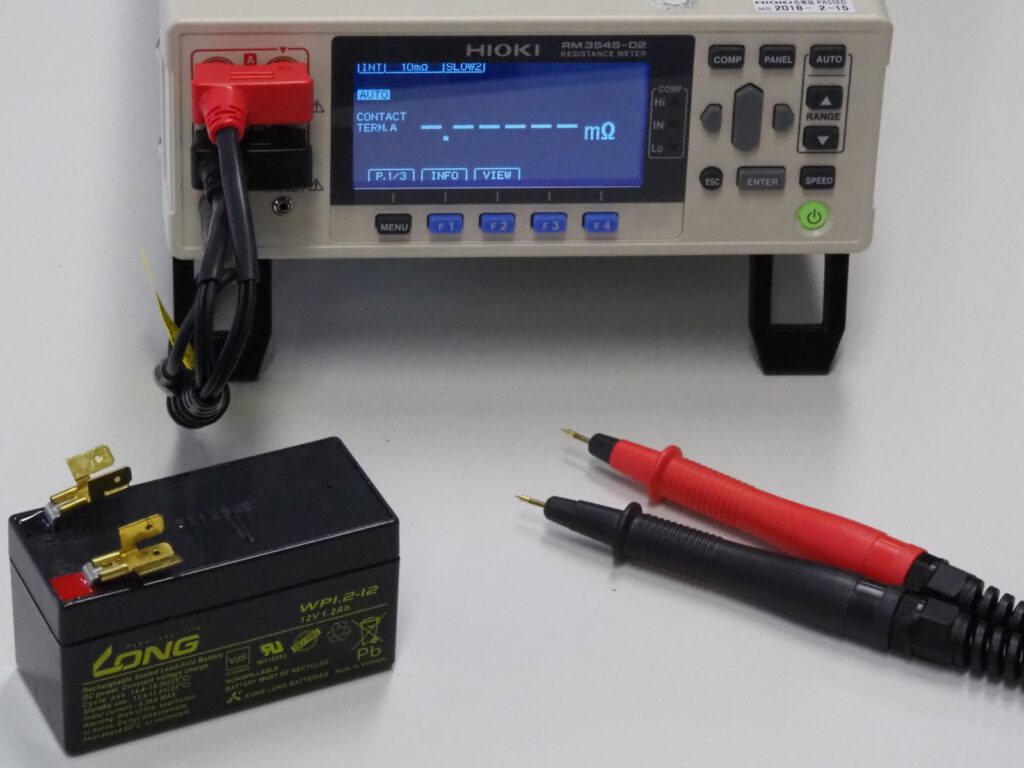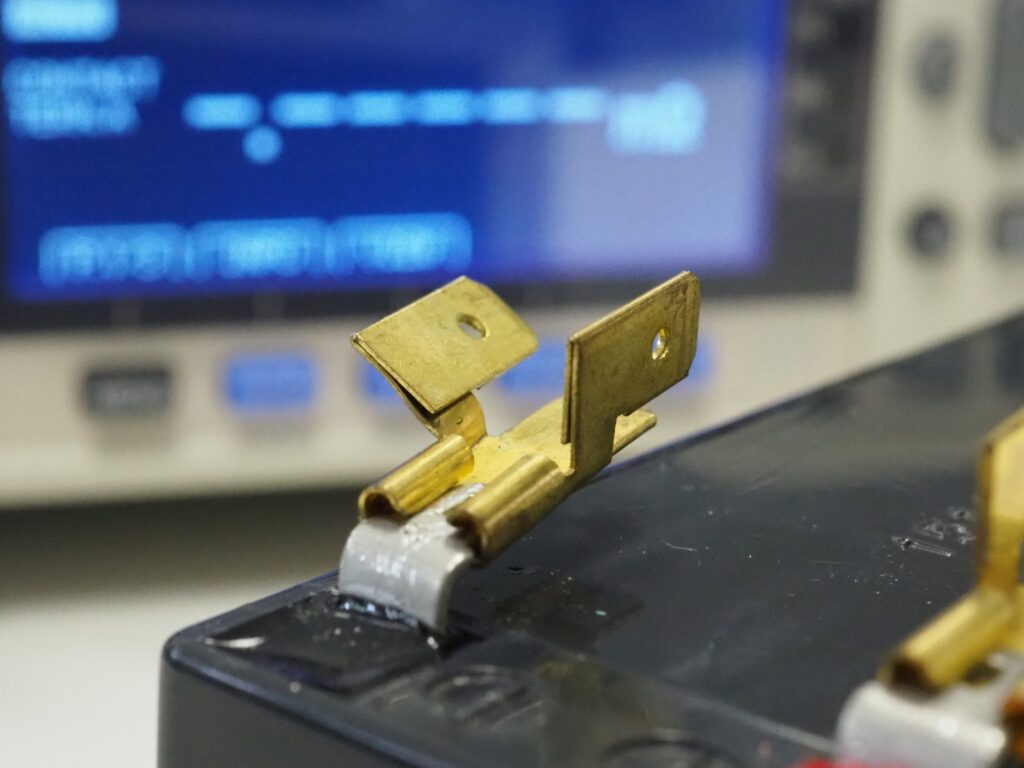The other day I posted an article about how temperature affects a battery measurement because I wanted to find out how much that impact actually was. There was some great feedback regarding this post (thank you very much for that!). One feedback was that I “commited a capital sin by using the brass tabs on the battery terminals to connect the Kelvin probes of the BT4560 test cables”.
Yes – I have to admit that I completely ignored the extra resistance these connectors would add to my measurements. Two reasons: First of all, I needed something to connect the Kelvin probes to that battery. Of course I could have used pin-type leads instead which I could have pushed on the battery contacts directly. But when you measure dozens of measurement points and several are below 1Hz then the measurement does take a while – and holding pins to such a small battery contact for a longer period of time might cause the pins to slip even a little with an influence on the measurement results. Also these brass contacts were available. The second reason why I didn’t worry about this extra resistance was because it would be added to the measurement curve of every measurement.
But of course after this feedback I wondered whether I completely underestimated the size of this extra resistance. The minimum resistance value I recorded for the battery was just under 100 mOhm – what if I added 50 mOhm by using those brass tabs? I work for HIOKI and HIOKI’s European demo pool is only a few steps further than our office coffee machine. That demo pool also includes resistance meters so I went and picked HIOKI’s flagship model RM3545 to find out about the resistance of these brass connectors:

The measurement on the image shows a resistance of 0.64 mOhm. I also tried the other side of the this folded piece of brass – so pushing the black pin not from the top right downwards but from the bottom left upwards. In this case the resistance value read 0.46 mOhm. Moving the black test pin further out behind that little hole would increase the resistance to 0.86 mOhm. So the good news for me was that however I measured the resistance value would always stay below 1 mOhm – considering that the lowest battery resistance value I measured was just below 100 mOhm I would say that it’s okay to ignore the resistance of the brass tabs.
Why did I pick HIOKI’s flagship resistance meter for this measurement? One of the things that makes this meter special is its measuement speed which at 2 ms for a complete measurement is one of the fastest – if not the fastest – in the industry. Therefore the RM3545 often gets integrated into production systems often in combination with the multiplexer option for this instrument which provides 20-channels of 4-terminal measurements for multi-point signals. Also the RM3545 has an extra guard connector to reduce measurement noise and things like a BIN interface. Great features and critical for some use cases – but nothing I really needed for my straight forward lunch break measurement. So as I already had the camera set up on a tripod I decided to make the same measument again with HIOKI’s handheld RM3548 resistance meter.
As you can see the measurement results are only around 20 microOhm away from each other. I tried to connect the measurement tips at the same points as with the RM3545 but a different position on the brass connector of just a few tens of a millimeter would already cause the measurement value to move up or down by 10 or 20 microOhm. Therefore I think a certain amount of luck was involved to get a measurement value with the RM3548 which was so close to the one of the RM3545 – especially considering that I took a photo while making the measurement. Looking back I think I was also too busy picking the right aperture for the photo because only later I noticed that the RM3548 was set to its 30 mOhm range when its 3 mOhm range would have been the more suitable one (auto-range was obviously turned off). However, for this kind of measurement the handheld RM3548 is absolutely fine as well. As it is a portable meter it is sometimes even much more suitable than any bench meter – for example if you want to measure contact resistances in a car, in a wind turbine or generally somewhere where you can’t quickly take the DUT to the resistance meter.
So no capital sin in my view when using those brass tabs – let me know if you think I missed something or if got things wrong.

